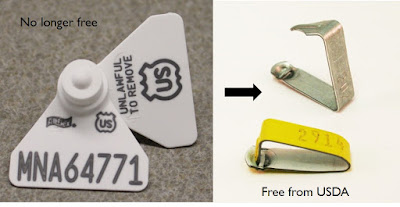Brady Campbell, Program Coordinator, OSU Sheep Team
How does corn processing and fiber source affect feedlot lamb performance, diet digestibility, nitrogen metabolism?

(Image source: Maine Organic Farmers and Gardeners Association)
Behaviorally, sheep and cattle are very different, especially in the way they eat. Sheep are more selective in their eating pattern and spend more time physically chewing and breaking down their feed than cattle do.
Regardless of the animal we are feeding, it is common practice in the livestock feed industry to process the grains fed to our animals. An issue with feeding processed grain is that due to an increase in surface area, the starches in grain become more readily available for the animal to digest. As a result, an increase in digestion may lead to metabolic issues such as acidosis in our ruminant species.
Therefore, a question of interest that arises is can sheep be fed unprocessed grains without Continue reading What Benefits are Gained by Processing Grain Fed to Sheep? →










